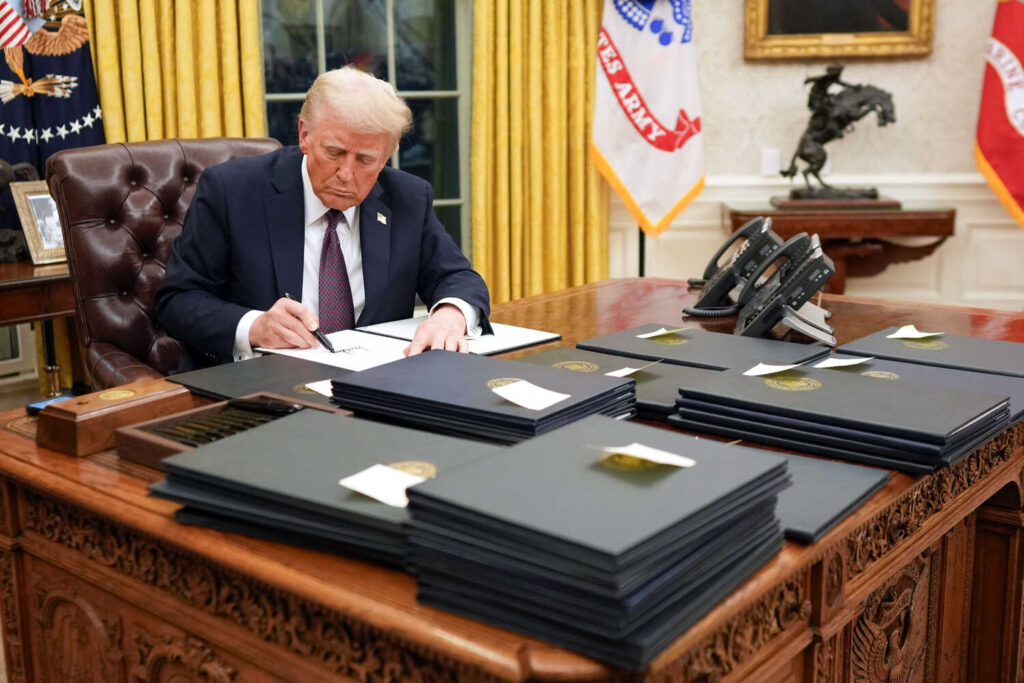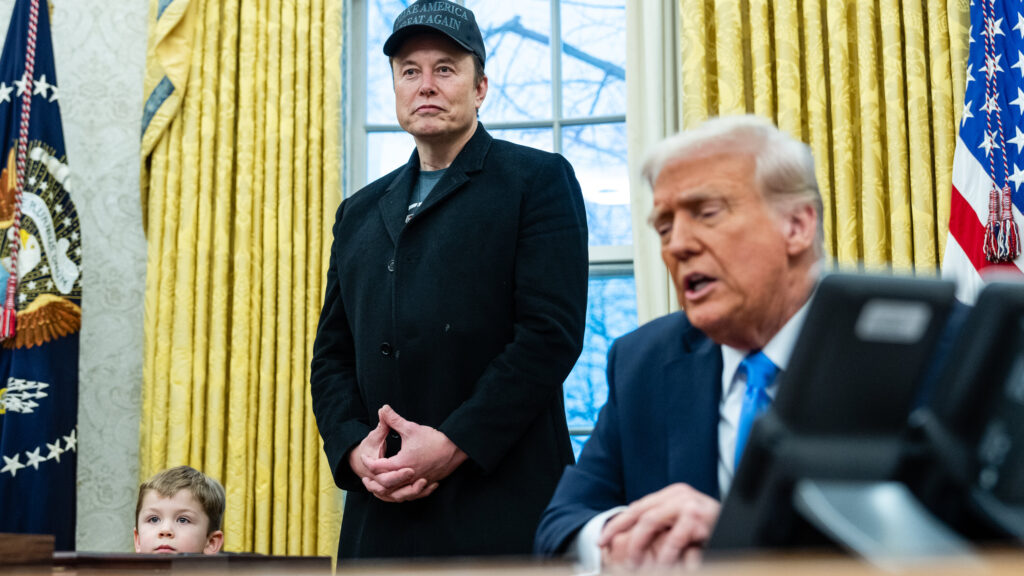
Discover the latest on Trump’s Executive order on IVF—a comprehensive look at the government study aimed at expanding in vitro fertilization while demanding radical transparency.
In a surprising yet bold move, President Donald Trump has signed an executive order on IVF that calls for a thorough study into expanding in vitro fertilization services in the United States. Alongside this directive, Trump has emphasized the need for “radical transparency” within government agencies. This news has stirred conversations across political, medical, and social circles, as experts and citizens alike weigh in on what it might mean for the future of fertility treatments.
What Does the Executive Order on IVF Entail?
The new executive order directs relevant government bodies to investigate how best to expand access to in vitro fertilization (IVF) and improve its affordability, availability, and quality. IVF, a process where an egg is fertilized by sperm outside the body, has become a beacon of hope for countless families facing infertility challenges. The order is not just about increasing IVF access—it also demands that government agencies share detailed information and data with the public, ensuring that the decision-making process is open and transparent.
This dual approach—enhancing IVF services while demanding radical transparency—reflects a broader vision of reforming public health policy. The focus is not only on creating better healthcare outcomes but also on rebuilding public trust by ensuring that all processes and findings are available for public scrutiny.
Background and Context: Understanding IVF
IVF has been a groundbreaking development in reproductive medicine since its inception in the late 20th century. The technique made headlines worldwide by enabling couples with infertility issues to conceive children. Over the decades, IVF has evolved significantly, with success rates steadily improving due to advancements in technology and medical protocols. In the United States, approximately 1.9% of all infants born annually are conceived through assisted reproductive technologies like IVF, according to recent data from the Centers for Disease Control and Prevention (CDC).
Despite its success, IVF remains a complex and costly procedure. The high costs often place it out of reach for many families, particularly those without extensive insurance coverage. With the executive order on IVF, the government is taking steps to address these financial and accessibility challenges, aiming to make fertility treatments more inclusive for all Americans.
The Historical Journey of IVF in America
IVF has a rich history in the United States, marked by several important milestones. The first successful IVF baby in the U.S. was born in 1981, following the technique’s initial breakthrough in the United Kingdom in 1978. Since then, the technology has improved dramatically, with the introduction of intracytoplasmic sperm injection (ICSI) in the 1990s and various advancements in embryo selection and cryopreservation in subsequent years.

Today, IVF is a common procedure in many fertility clinics across the country. However, the field continues to evolve, facing challenges related to cost, regulation, and ethical debates. The recent executive order is seen as a significant step toward addressing these challenges head-on, potentially marking a new era for fertility treatments in America.
The Push for Radical Transparency
A key component of Trump’s executive order is the call for radical transparency. This means that government agencies involved in the study and potential expansion of IVF services will be required to provide clear, accessible information about their research, funding allocations, and policy decisions.
Transparency in government has long been a topic of debate. Advocates argue that open communication fosters accountability and trust, while critics worry about the potential risks of exposing sensitive data. In this case, the push for radical transparency is designed to ensure that any policy changes related to IVF are backed by robust data and are free from undue influence. It is hoped that this approach will lead to more informed discussions about reproductive healthcare and will ultimately result in policies that benefit all Americans.
Implications for American Families
For many American families, the cost and complexity of IVF have been significant barriers. With infertility affecting roughly 10-15% of couples in the United States, the need for affordable and accessible fertility treatments is more pressing than ever. By studying how to expand IVF services, the government could pave the way for innovations that lower costs, improve success rates, and widen access to cutting-edge reproductive technologies.
Families who have struggled with infertility issues see this initiative as a potential game-changer. Improved access to IVF could mean earlier and more effective interventions, reducing the emotional and financial burdens associated with prolonged fertility treatments. Moreover, increased transparency in the process may help dispel myths and misunderstandings about IVF, leading to a more supportive public dialogue.
Expert Opinions and Reactions
The reaction to the executive order on IVF has been mixed. Many experts in the fields of reproductive medicine and public health welcome the initiative, noting that a comprehensive study could lead to breakthroughs in treatment protocols and funding strategies. Dr. Elaine Thompson, a leading fertility specialist in California, commented, “Access to IVF is a critical issue. If this study leads to practical steps to reduce costs and improve accessibility, it could have a profound impact on families nationwide.”
On the other hand, some critics caution that government intervention in reproductive health must be handled carefully to avoid unintended consequences. Concerns have been raised about potential regulatory overreach and the importance of maintaining ethical standards in assisted reproduction. Nonetheless, the call for radical transparency has garnered support from those who believe that openness is essential for effective policymaking.
Interesting Facts and Statistics
- Infertility in America: According to the CDC, about 6.7 million women in the United States have difficulty getting pregnant or carrying a pregnancy to term.
- Cost of IVF: In the U.S., a single cycle of IVF can cost between $12,000 and $15,000, excluding medications. Many families require multiple cycles, making the treatment even more expensive.
- Success Rates: The average success rate for IVF is around 40% for women under the age of 35, but this rate declines significantly with age.
- Growth of IVF Clinics: The number of fertility clinics in the U.S. has grown steadily over the past decade, reflecting an increasing demand for assisted reproductive services.
What the Future Holds
The executive order on IVF could herald significant changes in how the United States approaches fertility treatments. By combining rigorous study with a commitment to transparency, the government aims to create a more robust framework for addressing infertility. If successful, this initiative could lead to:
- Increased Funding: More resources allocated for research and development in reproductive technologies.
- Policy Reforms: Updated guidelines and policies that make IVF more accessible and affordable.
- Enhanced Data Sharing: A more open government process where data and findings are shared with the public, enabling informed decisions and fostering trust.
Conclusion
Trump’s recent signing of the executive order on IVF represents a significant development in the landscape of American healthcare policy. By mandating a comprehensive study on expanding in vitro fertilization and demanding radical transparency, this order aims to address both the practical challenges of IVF access and the broader need for government openness. Whether this initiative will lead to substantial policy changes remains to be seen, but it has certainly sparked an important conversation about the future of reproductive healthcare in the United States.
As the study progresses and more details emerge, families, healthcare providers, and policymakers will be watching closely. The hope is that through increased transparency and a focus on innovation, the barriers to accessing IVF can be reduced, giving more American families the opportunity to experience the joy of parenthood.
Frequently Asked Questions (FAQs)
Q1: What is the executive order on IVF?
A1: The executive order on IVF is a directive signed by President Trump that calls for a comprehensive study on expanding in vitro fertilization services in the U.S., alongside a mandate for radical transparency in government decision-making processes related to this initiative.
Q2: Why did Trump sign this executive order?
A2: Trump signed the order to address the high costs and limited accessibility of IVF in the United States, aiming to provide more affordable fertility treatment options and ensure that government policies and research are conducted transparently.
Q3: What is in vitro fertilization (IVF)?
A3: IVF is a medical procedure where an egg is fertilized by sperm outside the human body. It is a widely used technique to help couples facing infertility conceive a child.
Q4: How might this order impact American families?
A4: If successful, the initiative could lead to lower costs, improved success rates, and broader access to IVF treatments, thereby helping more families overcome infertility challenges.
Q5: What does ‘radical transparency’ mean in this context?
A5: Radical transparency refers to the government’s commitment to openly share all relevant data, research findings, and policy decisions with the public. This is intended to foster trust, accountability, and informed decision-making.
Q6: Are there any historical precedents for such transparency measures?
A6: Yes, previous government initiatives have emphasized transparency to build public trust, such as open meetings and public reporting on environmental or health studies. This order seeks to continue in that vein by ensuring all IVF-related research is accessible to the public.
Q7: What are the next steps following the issuance of this order?
A7: The next steps will involve detailed research and analysis by designated government agencies, public consultations, and potential policy recommendations based on the findings. The outcomes of this study will shape future approaches to IVF and fertility treatments in the United States.
